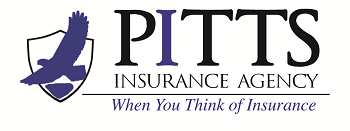
How Supplemental Insurance Supports Breast Cancer Prevention
You offer health insurance to your workforce—that’s great. But health insurance alone doesn’t guarantee that people are actually getting health care.
That’s particularly true when it comes to preventative services. In 2022, 22% of women skipped a yearly checkup or routine test. Delaying preventative health care can lead to late diagnosis and as a result can impact their chances of recovery.
Why patients often avoid cancer screenings
The reasons people avoid care are varied, but the cost runs high. Nearly 4 in 10 Americans, or one of their family members, postponed medical care in 2022 due to costs. Young middle-aged adults likely make up the majority since seniors that are 65 and older are covered by Medicare.
But cost isn’t the only reason people fail to get all the services they need. A recent poll found that patients skip mammograms for three reasons: assuming they’re healthy, finding them uncomfortable and lacking time/prioritizing.
All of these factors can also detract from your employees’ well-being, making it imperative that employers like you address the avoidance of medical care. Employees are best able to help cultivate a healthy business when they themselves are healthy. So helping your team get the care they need isn’t just benevolent—it keeps your business at its best.
Breast cancer statistics are clear: It’s better to prevent than just react
The unfortunate reality is, cancer touches almost everyone at some point in their lives, making preventive care a necessity — especially since no one knows the exact causes of the disease or why one develops it and another doesn’t. Additionally, there’s no set age at which it may occur. People with high-risk factors such as a family history of the disease can develop it at all different ages.
Thankfully, most times, women survive breast cancer if it’s found and treated early. In fact, based on a recent study, when caught in its early stages the five-year survival rate is 99%.
When should women get mammograms?
The U.S. Preventive Services Task Force recommends screening mammograms every two years for women between ages 40 and 74 who are at average risk for breast cancer. Women who are at higher-than-average risk for breast cancer may be advised to begin screening at a younger age and to undergo more frequent screening tests. Women should talk to their doctor about when to begin screening and which screening tests are most appropriate for them.
Breast cancer screenings can help prevent larger medical costs
The longer a problem goes unnoticed, the longer it may take to fix. And when this time is associated with a price tag, not seeking preventive measures can wind up biting your employees in the behind.
In a world where cancer patients may face out-of-pocket costs between $10,000 to $15,000 for just one drug, you might not be shocked to learn that the average cost for breast cancer treatment is between $20,000 and $100,000. That doesn’t mean there isn’t sticker shock — especially when you’re the one paying. Fortunately, just as preventive care may lead to the early discovery and treatment of breast cancer, it also may lead to lower costs. Avoiding care can allow the disease to spread, leading to increased treatment when care is eventually sought, and the higher costs associated with it.
Blog Credit to our Partners: Aflac Insurance
